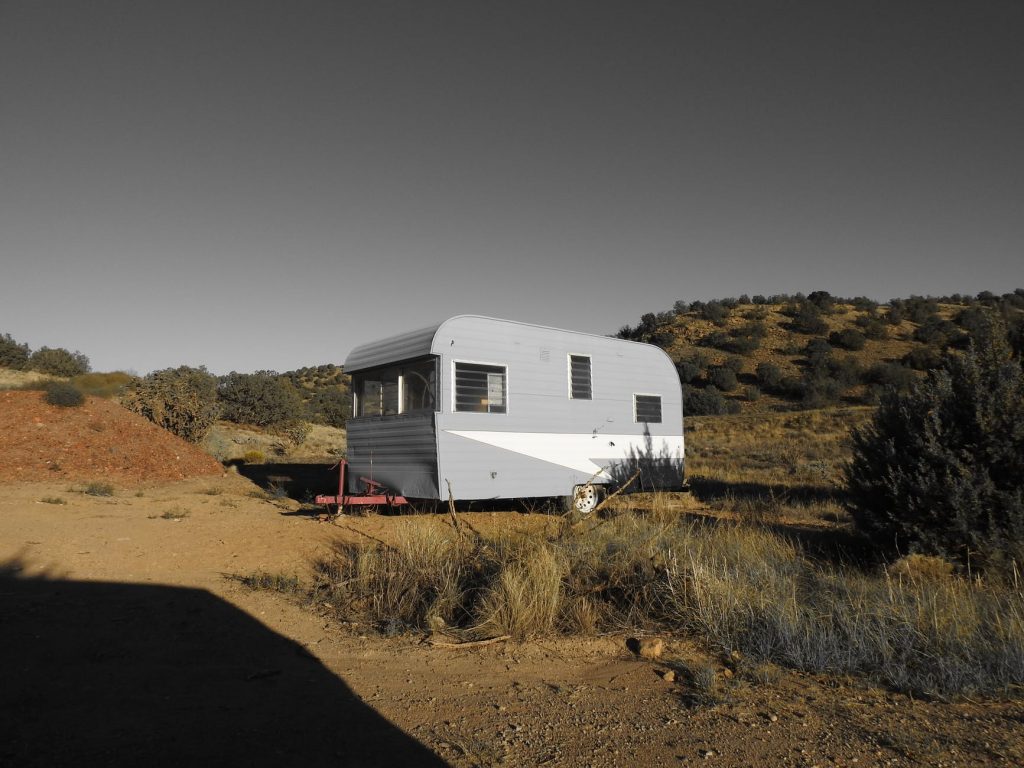
There’s a hot debate among motorsport enthusiasts involving toy haulers and travel trailers. Each option has pros and cons. The issue is how to choose the right one.
It’s more difficult than ever to decide because floor plans for both travel trailers and toy haulers offer an array of amenities. One way to choose is by getting to know the differences.
Sometimes, the decision between a travel trailer and toy hauler depends on what a truck can tow. Toy haulers are often heavier than modern travel trailers and require a vehicle with a higher towing capacity.
The Differences: An Introduction
The main differences between toy haulers and travel trailers are weight (as mentioned above) and interior space. While small toy haulers may be slightly lighter, they typically weigh more than travel trailers.
Toy haulers have a sturdier frame, which is what makes it heavier than today’s travel trailers. The toy hauler also includes a garage area. This can minimize the interior space of the trailer.
Some newer models of toy haulers are lighter because they are built using aluminum. They may also have a fold away table and couch. This allows the living area to expand into the garage.
The travel trailer includes an array of luxurious features to ensure comfortable living. These include full-size refrigerators, a bunkhouse, fireplace, big screen TV, and more.
All this adds up quickly, making the decision even more challenging. Get a more in-depth look at the biggest differences here.
1. The Garage Space
Toy haulers typically have garage space from eight to 13 feet long. There’s usually a side or rear ramp to get motorsport vehicles on board.
However, some manufacturers have updated the garage. Now, they are considered multifunctional areas.
The garages can become a sleeping area, family room, dining area, or covered deck. When the garage can be used in multiple ways, it expands the living space significantly.
The downside of all this is when the garage is open to the rest of the trailer. As a result, the oil and gas smell from the vehicles on board may spread.
There are options to have a closed off garage, which prevents this from occurring. Even when the garage is closed, it’s still possible to use it as a patio or deck.
2. The Deck or Patio
Garages in a toy hauler have the option to serve as a covered deck under the roof, and the ramp can open to form an outdoor deck, including deck rails. Screening options are also available to keep bugs at bay. This isn’t an option available with a travel trailer.
3. The Water Tanks
There are some reports that claim toy haulers have larger water tanks than travel trailers. This isn’t true.
Each manufacturer offers varied sizes of water tanks in travel trailers and toy haulers. Buyers can choose either without having to worry about a smaller water tank size.
4. Off-road Handling
Because toy haulers are built with a heavier and sturdier frame, they can withstand being off-road better than the average travel trailer. Besides the stronger frame, toy haulers have stronger suspensions and axles, too.
Other factors impact this, too. It depends on the towing capacity of the truck being used, the terrain, and the toy hauler’s weight.
5. Weight
Even though modern toy haulers usually weight more than the travel trailers, carrying capacity and hitch weight also has to be considered. The toy hauler is designed to carry more weight and has a heavier hitch weight.
It’s essential for a buyer to know the towing capacity of their truck compared to the weight of the fully loaded toy hauler. Since travel trailers don’t haul other vehicles, the weight is less.
6. Towing
The ability to expand the living space with interior upgrades and slide outs makes the toy hauler even heavier. This means knowing the towing capacity of the truck is necessary.
7. Storage
Travel trailers offer more interior space than toy haulers. That’s because the floor plans typically include more closets than the alternative.
However, toy haulers include storage space. This can be used by chairs, coolers, kayaks, bicycles, motorized vehicles, and anything else that fits.
8. The Cost
The cost of a toy hauler is between $20,000 and $80,000. The price may exceed this point, too. The final price depends on amenities and size, which range from basic to fully loaded. They are usually not as expensive as the fifth-wheel models, which are bigger and more luxurious.
New travel trailers range in price from $8,000 to $65,000, with the average option costing being between $15,000 and $30,000. The final cost depends on amenities, materials, construction methods, floor plan, weight, and size.
9. The Length
The average travel trailer is between 14 and 40 feet long. The same is true for toy haulers. However, squeezing into a 14-foot toy hauler may be challenging.
10. Gas Mileage
The gas mileage depends on the weight of the trailer. The heavier the load, the lower the gas mileage.
If a person travels many miles throughout the year, this may be an important factor. If so, choosing a newer, lighter trailer is best, but it will cost more than the older, heavier options.
11. Interior Features
Interior features for both options have come a long way. Now, travel trailers have more interior features than larger RVs and 5th wheels.
Travel trailers are available with fireplaces, several bedrooms and bathrooms, elevated patios, and more. The total number of features is impressive.
The same goes for toy haulers. While the living space in thee is smaller, it’s made up for with the exterior features designed to help maximize the space.
What Option is Best?
Choosing between a toy hauler and a travel trailer is a big decision. Take some time to compare the two carefully and choose the option that best suits the buyer’s needs and budget. Both options are great additions to a person’s fleet of vehicles.